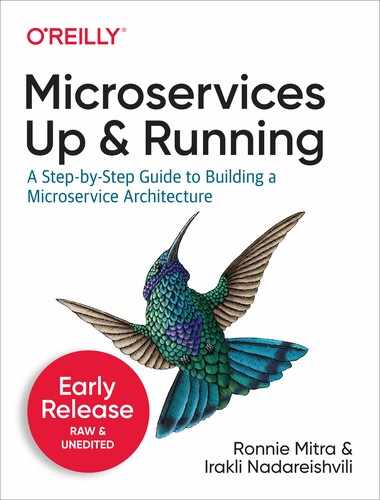Book Description
Microservices architectures offer great benefits: faster change speeds, better scalability and cleaner, evolvable architectures. But, implementing your first Microservices architecture to get those rewards is difficult. How do you quickly educate your team on all the technical details of execution to maximize your chances of success? How do you survive the first year of bringing your microservices implementation to life? How do you improve your execution?
Making the right implementation decisions is difficult and you don't have the luxury of time to find out if the decisions you are making are the right ones. This book offers a prescriptive guide for building a Microservices architecture to combat that uncertainty. Inside, you will find a step-by-step implementation journey mapped out based on the techniques and architectures that have been proven to work for Microservices systems.
This book solves the following problems for users:
- What does a "good" microservices project look like?
- Are the decisions you're making for your project the "right" ones?
- How do you come up with a good microservices design that fits your own context as quickly as possible?
- Where should you spend time thinking/designing and where should you just implement "best practices"?
Table of Contents
- 1. Towards a Microservices Architecture
- 2. Five Principles
- Why Principles Matter
- Goals and Principles
- People-First Design
- Rightsized Services
- Build-Services-Only
- Single-Cloud Architecture
- 12 Factor Development
- 1. “One codebase tracked in revision control, many deploys”
- 2. “Explicitly declare and isolate dependencies”
- 3. “Store config in the environment”
- 4. “Treat backing services as attached resources”
- 5. “Strictly separate build and run stages”
- 6. “Execute the app as one or more stateless processes”
- 7. “Export services via port binding”
- 8. “Scale out via the process model”
- 9. “Maximise robustness with fast startup and graceful shutdown”
- 10. “Keep development, staging, and production as similar as possible”
- 11. “Treat logs as event streams”
- 12. “Run admin/management tasks as one-off processes”
- Summary
- 3. Designing Your Microservices Operating Model
- 4. Infrastructure Pipeline
- 5. Building a Microservice Infrastructure
- 6. Designing Microservices: The SEED(S) Process
- Introducing the Seven Essential Evolutions of Design for Services - SEED(S) Method
- Identifying Actors
- Identifying Jobs to Be Done (JTBDs)
- Designing queryable and actionable interaction patterns with Sequence Diagrams
- Deriving actions and queries from JTBDs
- Describing Each Query And Action As A Spec, With An Open Standard
- Getting Feedback on the API spec
- Implementing Microservices
- Microservices vs. APIs
- Summary
- 7. Rightsizing Your Microservices: Finding Service Boundaries
- 8. Dealing with the Data
- 9. Developer Workspace
- 10. Developing Microservices
- 11. Building your Microservice Pipeline: From Test to Release
